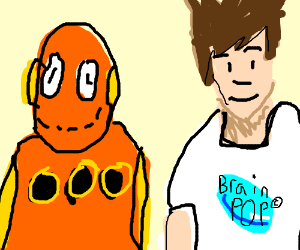
Tim: See? In the first sentence, the conjunction “”and” joins the words “Moby” and “I.” In the next one, “or” joins up the phrases “a note from your parents” and “a permission slip from the teacher.” And in the last one, “but” joins the clauses “Moby claims that he set the alarm” and “I didn’t get to school on time.” Moby claims that he set the alarm but I didn’t get to school on time. If you’re late, you need a note from your parents or a permission slip from the teacher. Several phrases are shown connected by conjunctions: You can use them to connect words to words, phrases to phrases, and clauses to clauses. Coordinating conjunctions join two equal parts of speech. Coordinating conjunctions include “for,” “and,” “nor,” “but,” “or,” “yet,” and “so.” You can remember then with an acronym: FANBOYS. Here are a few different kinds of conjunctions. Tim: They join up parts of a sentence, and let you express all kinds of complex relationships between ideas. The screen shows several conjunctions: while, and, either, nor, as, yet, neither, for, than, once, so. Conjunctions are really useful little words.
Tim and moby movie#
Tim: Dear Tim and Moby, Could you make a movie about the different kinds of conjunctions? From, Marie. Tim and Moby sit down at desks in detention. Why didn't you tell me that your alarm clock was malfunctioning? A teacher hands Tim a paper that reads: Detention. Tim and Moby are shown hurrying through the school hallway and into a classroom. The alarm clock next to his bed reads 9:15.

Text reads: The Mysteries of Life with Tim and Moby


 0 kommentar(er)
0 kommentar(er)
